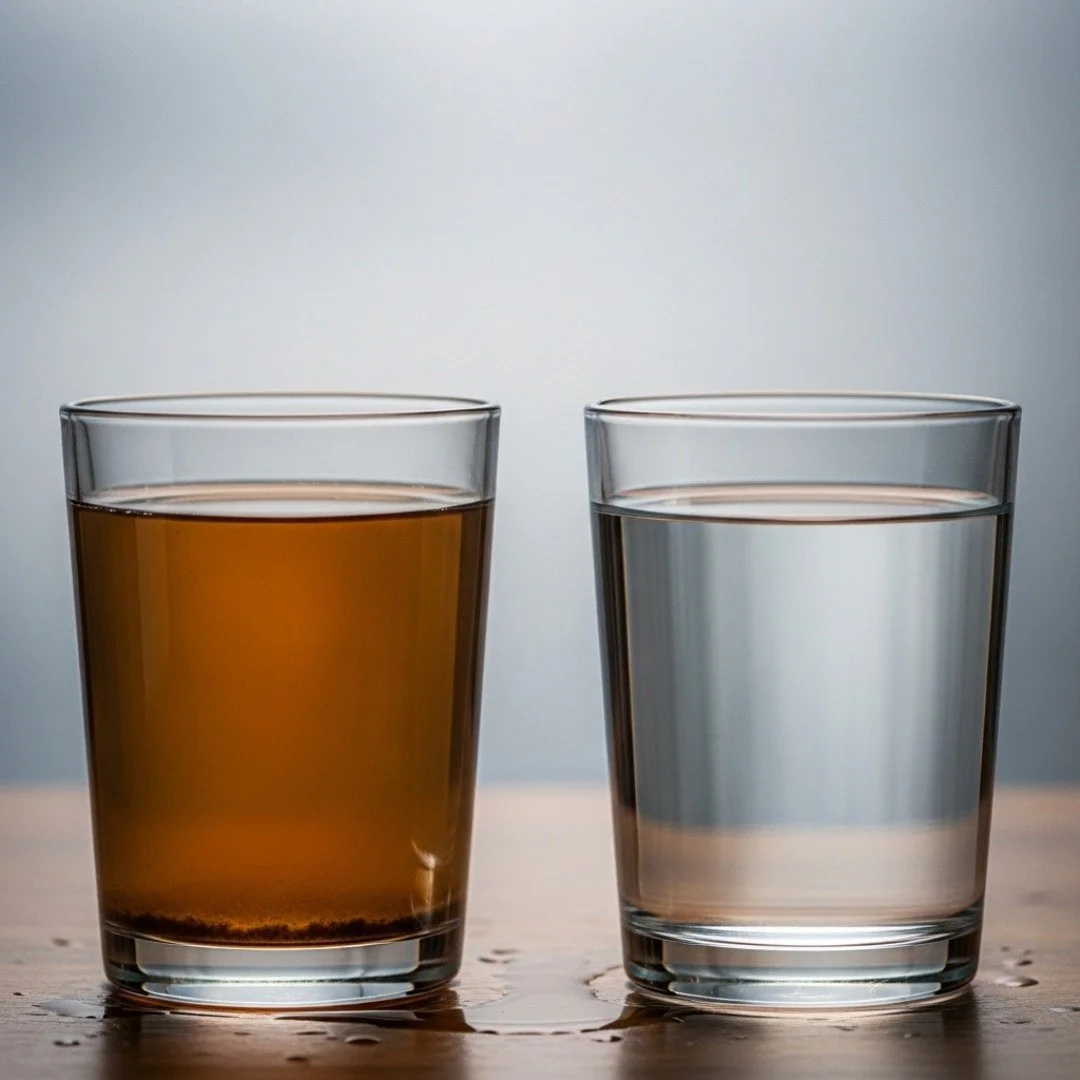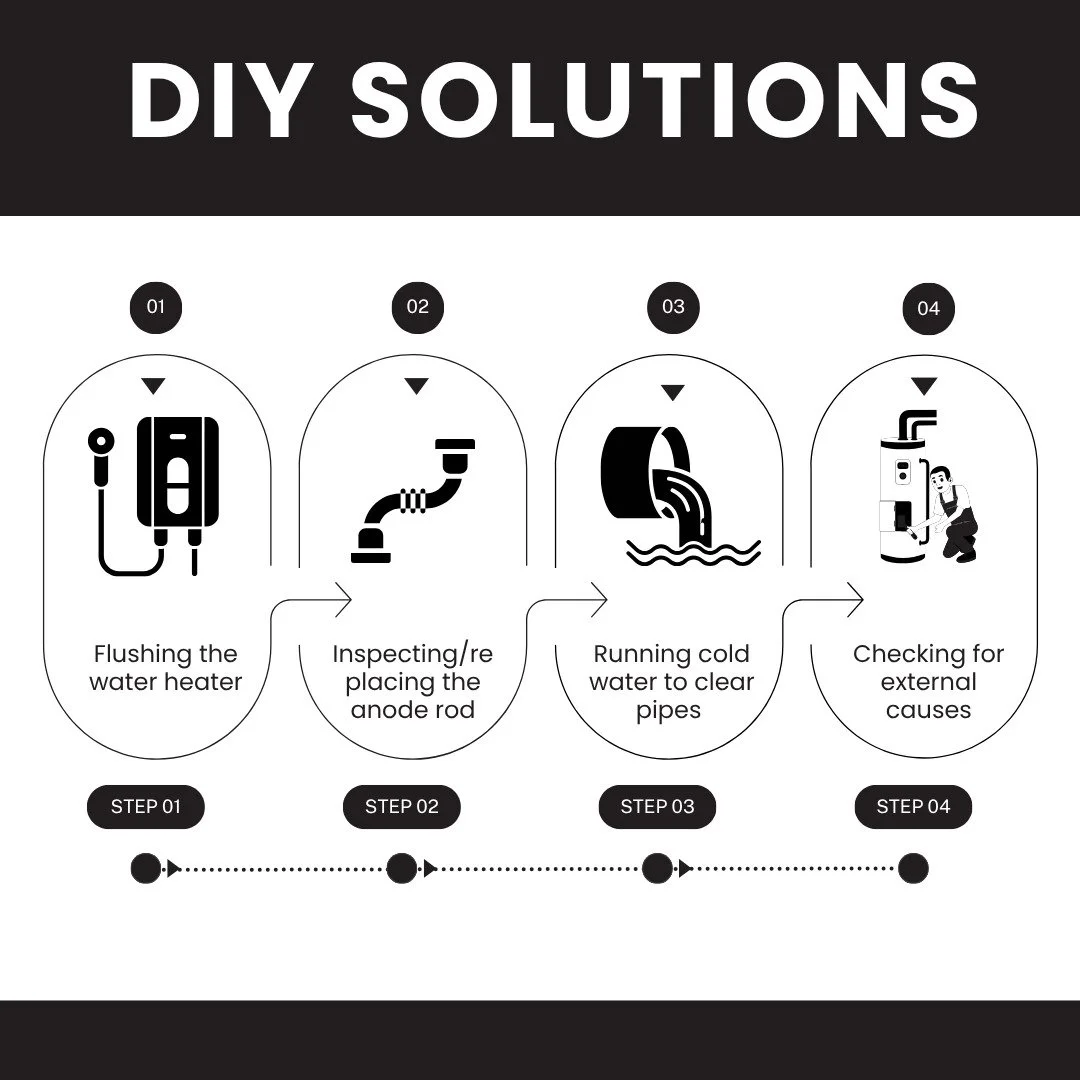Why Is My Water Brown? Common Causes and Solutions
Let’s get this out of the way—if you’ve ever stood at your sink wondering, “why is my water brown?” while eyeing your glass like it just betrayed you, you're not alone. And no, it’s not because your house is haunted or your pipes hate you (though at this point, it might feel like both). That murky mess coming out of your faucet is your plumbing’s way of trying to get your attention. Loudly.
The usual suspects are rust-flaked water heaters, sediment that’s overstayed its welcome, or old pipes finally waving the white flag. But not all brown water stories end the same way—and some are far worse than the rust excuse you're usually handed.
We’ll break it all down—what it means, what you can do right now without calling anyone, and when it’s time to stop guessing and phone someone who brings a wrench and a warranty.
Why Is My Water Brown? Common Causes
You open your tap and—BAM—out pours something that looks like stale cola. Now, let’s break down what could be triggering this unwelcome show.
1. Rust and Corrosion in Your Water Heater
Have you ever peeked at the top of your rusty water heater and thought, “Oh great, more rust”? Those flaky stains up top scream corrosion on top of the water heater. Inside, the sacrificial anode rod is supposed to take the hit, safeguarding the tank. But once that rod flakes out, corrosion goes beast mode, gnawing at the tank’s metal and sending rust into your water. That’s when your tap water running brown in the hot cycle becomes a daily annoyance.
If you’re only seeing discoloration with hot water, odds are excellent your heater is the culprit. A worn-out water heater corrosion attack can release rust so quick, you’d swear you’re brewing tea indoors. In fact, Clean Water America warns that failing anode rods are the most common cause of rusty tanks.
2. Sediment Buildup in the Water Heater
Hard water fans, rejoice… except not. All those calcium and mineral bits eventually sink to the bottom of your tank. After a while, your heater’s not just heating water—it’s stirring a muddy soup. Then the sludge shot that turns clean water into discolored water on your morning rinse.
That’s why draining a rusty water heater often unleashes a brown gush that looks like a science experiment gone wrong. In zones with high hardness, this is a routine problem—and the solution is surprisingly simple: a semi-annual flush. Miss it, and one day your water runs brown, and your coffee tastes like... well, actual mud.
3. Corroded Pipes in Your Plumbing System
But hold up—don’t blame the tank before testing the lines. In homes with old galvanized pipes, internal corrosion can rain rust even into cold taps. That’s discolored water that isn’t just an electrolytic preview of hot water—it’s a full-on plumbing meltdown.
Here’s a quick test: Is your cold water brown too? If yes, your culprit likely isn't the heater—it’s the pipes.
4. External Factors: Water Main Disturbances
Lastly, sometimes it’s not your gear—it’s the street. City crews replacing mains? Nearby construction? A busted hydrant? That can knock sediment loose in the public water line, letting it infiltrate your home’s pipes. You’ll see tap water running brown in any tap, for a bit, but usually it clears after a few minutes.
If that’s your scenario, don’t call a plumber. Run cold water for five minutes, give it another look. If still murky, your utility company probably needs to step in—or maybe it’s just stubborn sludge settling.
Is Brown Water Safe?
Look, just because your water looks like root beer doesn’t mean you're in full hazard mode—but don’t relax like it’s halftime either.
• When rusty tap water is usually harmless
In most cases, brown water is more unsightly than unsafe. The culprit—iron—belongs in the EPA’s “secondary contaminants” list, meaning it stains and tastes odd but rarely threatens health. So yes, it sucks for your laundry, you might taste it during your morning coffee, but your risk of getting sick is minimal.
But still… Nobody wants that cola-colored stain in their tub. And if it’s hot water only? That’s a dead giveaway your water heater corrosion is at peak drama, begging for maintenance.
• But caution: corrosion can mask serious issues
Now, here’s a twist: brown water doesn’t always mean mild inconvenience. Sometimes it’s a heist where lesser-known contaminants sneak in. Like lead from old piping or bacteria from corroded joints. That’s not just gross; that’s genuinely worrisome.
A tank with heavy corrosion on top of a water heater may leak internally without leaving a puddle. That corrosion can hide biofilm or even pathogens, waiting for your next shower.
Quick Safety Reference
No odd taste/smell, clears after flushing → likely iron, low risk.
Metallic/egg-smell, persistent tint → warrants testing.
Sudden color change + plumbing work nearby → provisional, but monitor.
Ongoing brown cold water → possibly old pipes—serious enough for a full check.
When you should test or call an expert
If flushing doesn’t revert your discolored water, or if symptoms hit randomly or smell funky, it’s time to test. Check for:
Iron & manganese – cosmetic mostly
Lead – dangerous, especially in older homes
Bacteria – immediate alarm
Olympian Water Testing confirms iron’s usually harmless—but it masks the real villains like lead or E. coli. If that doesn’t sit right with you, grab a DIY kit or call a pro. And hey, if your water heater is at risk, Spotless can handle the inspection and clean-up—with warranty.
How to Fix Brown Water: DIY Solutions
Time to roll your sleeves up—this isn’t rocket science, but you can rescue your home from tap water running brown without dialing for backup. Here’s the lowdown on what actually helps.
1. Flush Your Water Heater
That rusty water heater could be your worst enemy. But it’s also your first line of defense if you flush it smartly:
Kill the power (or gas)—no sizzling surprises, please.
Let the tank cool a bit; hot water + impatience = brutal burns.
Attach a hose to the drain valve—straight to outdoors or a tub.
Open the valve—let it drain until water runs clearer than yesterday’s sludge.
Crack the pressure-relief valve mid-drain to let air in (helps speed things up).
Close it all, refill, then kick the system back to life.
Seems simple? It is. Do this every six months in hard-water areas or once a year elsewhere. Skip it, and water heater corrosion starts hoarding sediment—and then “brown waterfall” becomes your morning norm.
2. Inspect & Replace the Anode Rod
The anode rod is the silent martyr protecting your tank; when it dies, corrosion moves in. Here's your blueprint:
Drain midway to expose the rod on top—spot any corrosion on top of water heater? That’s your cue.
Unscrew it—if it’s mushy, heavily corroded, or largely dissolved, it’s toast.
Swap it for a new one; tighten it right back in.
This swap keeps your heater alive and your water clear. Seriously: this one quick fix halts water heater corrosion in its tracks—and saves you from buying a replacement heater too soon.
3. Run Cold Water to Clear Pipes
Sometimes the heater’s fine, but your lines are rusty.
Turn on a cold faucet—bathroom or outdoor spigot works.
Let it run for 10–20 minutes; think of it as rinsing your plumbing from the inside.
If discolored water vanishes, great. If not—time to think bigger.
This step flushes out built-up rust or grit. If it’s still murky, external factors might be at play.
4. Check for External Causes
Believe it or not, your problem might be beyond your front door:
Construction nearby?
Water main replacements?
Hydrant testing?
These can jolt tap water running brown by stirring up sediment in the public system. If these aren’t happening, move on. But if they are, run cold water until things clear—usually within minutes.
When to Call a Professional Plumber
Sometimes DIY hits a wall. Here’s what deserves pro-level attention:
1. Persistent Brown Water
If tap water running brown stubbornly sticks around—across hot, cold, or multiple taps—you need an expert. It’s a sign of deeper corrosion or system issues.
2. Visible Water Heater Corrosion
Spot corrosion on top of the water heater—rust flakes, leaks, weird gurgles? Those are more than nuisances. That's a water heater screaming for repair.
3. Strange Noises or Leaks
Clangs, sizzles, drips. These are red flags. Ignoring them risks tank failure or floods.
4. Health & Safety Concerns
If your water gets weird: metallic, rotten-egg smells, or it only shows signs in some taps—don’t guess. Test it.
5. Who to Call If My Water Is Brown
Ask yourself: do I need answers or installations?
Need water heater corrosion repair? Call a licensed plumber.
Suspect lead or bacterial contamination? Bring in a certified water tester.
At Spotless Plumbers, our experts fix heaters, replace corroded pipes, and run full water quality tests—all backed by warranty. Learn more about Spotless Plumbers and our service guarantees—so you won’t end up calling someone else tomorrow.
Conclusion
Most cases are beatable with a bit of knowledge and elbow grease. But if your water keeps looking like chocolate milk, or you spot corrosion, don’t wait. Instead of worrying, contact us. If it's not DIY-fixable, we’re the pros to:
repair corroded lines,
test and clear up discolored water,
—all under a service guarantee. That grey area between orange and clear? We deal in clean. Learn more about Spotless Plumbers and schedule your check-next week—before you're back to brushing your teeth with ‘tea’.
Frequently Asked Questions
-
A: Run your cold water tap for 10–20 minutes to see if it clears. If it doesn’t, check if the discoloration is in both hot and cold water. If it's only hot, your water heater may be the issue. If it persists across taps, contact your water utility or a licensed plumber to inspect for corrosion or sediment buildup.
-
A: Brown water usually comes from rust, sediment, or corrosion inside your water heater or pipes. It can also be caused by external issues like municipal water main repairs that disturb settled debris. If it’s only your hot water, your water heater is likely the source.
-
Generally, yes—if the discoloration is from iron or sediment, it's more of a cosmetic issue. However, if the water smells strange, feels oily, or doesn’t clear after flushing, it’s best to avoid contact until tested by a professional.
READ MORE…
8 Common Water Heater Problems: A Homeowner’s Guide
How Does Plumbing Work? What Your Plumber Knows That You Don't





